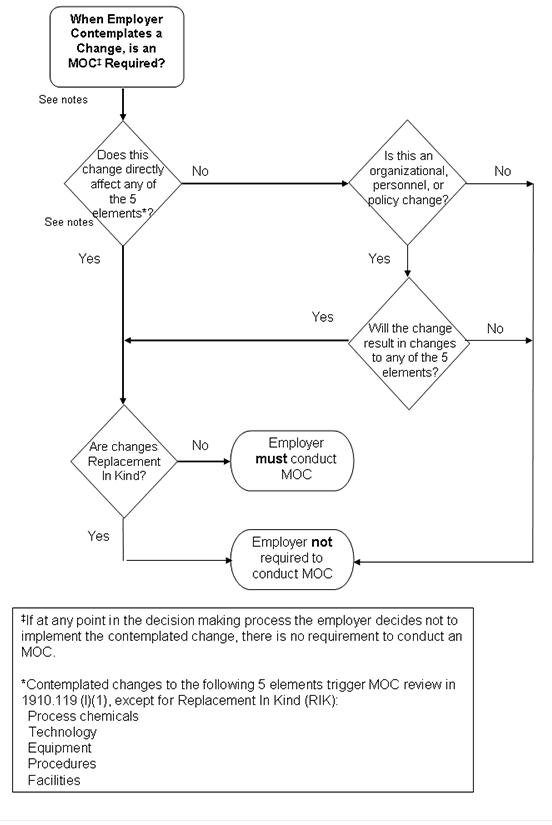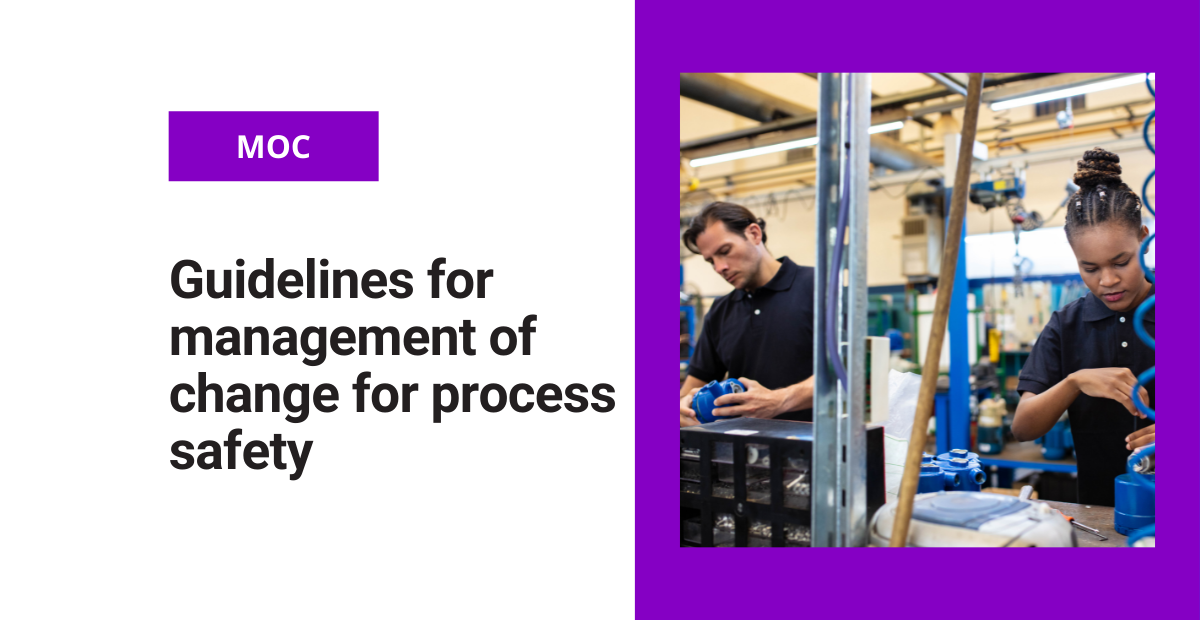Under the process safety management (PSM) standard, you have to have written management of change (MOC) procedures. These should cover organizational changes as they relate to chemicals, technology, equipment, procedures, and changes to PSM-regulated facilities.
What triggers MOC procedures?
Organizational changes, such as changes resulting from mergers, acquisitions, reorganizations, staffing changes, or budget revisions, may affect PSM at the plant level and trigger a PSM MOC procedure.
Examples include:
- Personnel changes, including changes in staffing levels, staff experience, or contracting out that directly impact PSM covered processes; and
- Internal and external policy changes that impact PSM-covered processes.
The PSM standard’s MOC provisions act as a control point when organizational changes might affect the facilities’ processes. Changes that do not impact PSM-covered processes do not apply.
For example, when the number of employees operating a process is to be reduced due to an organizational change, operators may not be able to continue the proper implementation of existing operating procedures.
Budgetary concerns
Budgetary changes can have a similar effect. For example, a significant cut in a maintenance department’s budget could require an employer to alter its mechanical procedures. This includes anything concerning:
- The timeliness or frequency of tests
- Preventive maintenance
- Inspections
- Repairs
- Replacements of PSM-covered equipment
Because this represents a change to mechanical procedures, you need to establish and implement an MOC procedure. Other organizational changes may not impact any of the five elements listed in the PSM Standard and therefore would not trigger PSM MOC.
Organizational changes that have no relationship to plant-level PSM processes, such as changes to corporate or administrative personnel whose duties do not relate to operations or maintenance functions, do not trigger PSM MOC procedures.
MOC process flow chart
The flow chart below illustrates the decision-making process for determining when to use an MOC:

Implementing PSM MOC procedures
When enforcing the PSM Standard, OSHA Compliance Safety and Health Officer (CSHOs) may issue citations for a violation of the PSM Standard whenever an employer has made a change or is in the process of making a change to process chemicals, technology, equipment, procedures, and facilities, without having established written procedures to manage the change.
Automating your MOC processes with software solutions can significantly help streamline and standardize your companies’ organizational changes. It’s essential that your written MOC procedures address the following considerations before any change:
- The technical basis for the proposed change
- Impact of change on safety and health
- Modifications to operating procedures
- The necessary time for the change
- Authorization requirements for the proposed change
For an effective MOC system, employers should:
- Train employees whose job tasks will be affected by a change in the process. They must be informed and trained on the change before the process start-up or affected by the process.
- Assign a specific person or group as the “owner” of the MOC system to monitor its effectiveness.
- Define the MOC roles and responsibilities of various types of facility personnel.
- Ensure MOC reviews are completed by qualified personnel and specify reviewer qualifications.
- Keep a running summary log of all MOC reviews.
- Establish and collect data on MOC performance indicators.




